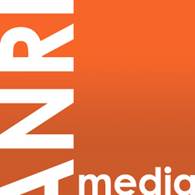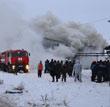One steamy night in February 1974, I went with friends to hear the great blues guitarist B.B. King in concert at Sydney’s Hordern Pavilion.
All went well until, an hour or so in, King collapsed on stage and had to be carried off. I left the Hordern in search of a phone box.
The first one was broken. Finding one that worked, I stuffed some money in, rang one of the copy-takers at ABC News and dictated five lines of copy.
I got on a bus and got home in time to hear those lines being delivered on the hourly ABC Radio News: “The guitarist B.B. King collapsed on stage tonight …”
I had been a cadet journalist for less than a week, and it was the first time anything I’d written ever got to air.
The newsroom I joined was a clattery, cluttery place full of typewriters, big rotary-dial phones, and lots and lots of paper.
Newspaper, typing paper, carbon paper. Fresh paper, scrumpled-up and discarded paper. Occasionally paper on fire, in a rubbish-bin, when someone had carelessly stubbed out a cigarette. (Almost everybody smoked).
If you wanted to make an interstate call, you had to go through the ABC switchboard. If (a rare event) you needed to make an international call, the ABC switchboard had to ring the international switchboard, and they had to ring a switchboard in the country you were ringing, and as often as not the person you were ringing would be out.
News came in from overseas on telex machines, so noisy that they had to be housed in a soundproof room at the back.
“Research” was a cuttings library, the collected volumes of old ABC News bulletins, some battered encyclopaedias, and a Who’s Who.
The Chicago reporter-turned-playwright Ben Hecht, who wrote The Front Page in 1928, would have recognised our newsroom without difficulty.
This is not a column about the good old days. The last thirty years have seen a journalistic revolution in which technology has given us opportunities we’ve never had before.
It’s not a Utopian column either: there are plenty who haven’t taken those opportunities, and there are proprietors who’ve used them to cut costs and reduce the quality of journalism. But the opportunities are there.
The phones were the first to go, replaced first by push button models and electronic switchboards that let you do your own dialling, then gradually by mobiles and smart phones.
The trusty typewriter became electric, then in the eighties came models with a page or two of electronic memory, then desktops, the ubiquitous laptop and now the tablet.
Somewhere in there, the last of the copy-takers retired, the end of a craft which had lasted less than a century. The telex took a long time to kill, but by the early nineties was starting to fade out, killed first by the fax, then the arrival of the world wide web.
Research was probably the last to change: when I started as PM Presenter in 1997, we still had a research department in the old, cuttings-library, style.
We needed it: the department only had one internet-connected computer, which I was one of the few interested in using, though I tried to proselytise my colleagues.
It was probably 2003 when the cumulative impact of all these changes really hit me.
The US invaded Iraq, and I sat in my studio interviewing correspondents while simultaneously surfing the web for updates and often first-person accounts from news outlets like The Times, The Guardian, the BBC and the Washington Post.
Anonymous posts from the man who called himself The Baghdad Blogger gave us some insight into what was going on inside Saddam Hussein’s regime.
That’s how it’s been for most of the last decade. It’s kept the programme fresh and on the cutting edge.
But in the last year or so, social media has brought an even more revolutionary development. It’s one which is transforming our approach, particularly to conflict reporting.
In the last few weeks, it has brought us (to name just a handful) the voices of a senior Yemeni government minister, Mohammed Abulahoum, a young man living in the besieged city of Zawiya in Libya, Sara, an Egyptian woman telling of how she’d just been inside the sacked Secret Service headquarters, Mohammed, a Bahraini photographer describing, live, how advancing troops were firing on a crowd of protesters, and Danie Tregonning, an Australian woman on the tenth floor of a hotel in Honolulu after the Japanese earthquake describing Hawaii’s preparations for the expected tsunami.
We got all those interviews through the use of Twitter, Facebook and Skype.
The person largely responsible: researcher Jess Hill. She gave a lecture at Sydney’s University of Technology this week, and here’s part of what she said:
“I really started using Twitter to source contacts the day the protests started in Benghazi. There were no reporters there, so I figured the only way we would hear about what was going on was by talking to people on the scene. I got in touch with a Libyan expat on Twitter, who gave us 9 phone numbers in Benghazi to speak to, all who spoke Arabic, of course. Omar, an Egyptian friend of ours who had been on PM a few weeks before, agreed to come and do the interviews at 7 in the morning. After several people hung up on him, he managed to get through to one man brave enough to talk about what was happening”.
Jess and her colleague Connie Agius have been using Twitter like this: they follow a lot of people who post about areas of the world we’re currently interested in.
They monitor patterns and cross-reference what they see, so that they’ll get early warning of breaking stories and then try to verify what they’re seeing.
When people appear to be eyewitnesses on the ground, they get in touch and ask them to DM (Direct Message, Twitter’s private messaging system). Phone numbers and Skype addresses are exchanged.
This is not a magic formula. You’ll notice that it relies on old and proven journalistic techniques, like source-checking and cultivating contacts.
It’s also a collaborative project. We’ve been greatly assisted, for instance, by the gigantic and tireless Twitter efforts of Andy Carvin, of America’s National Public Radio network.
Because of his frequent questioning (“Source?” “Confirm?”) a lot of what we see coming out of the Middle East and North Africa is easier to judge: rumour? opposition propaganda? government propaganda? fact?
More from Jess Hill:
“I was introduced to the citizen journalist Mo Nabbous, from Benghazi, over Twitter. But Skype was the best way to keep in touch, because we could just casually exchange information. It was about 3 or 4 in the morning [Benghazi time] when I saw him bob up on Skype one day, just after I watched a video report he’d filed on his livestream about a power station outside Benghazi being on fire. We chatted, and he said he would speak to us on PM, so I ran into the studio. The audio went to air that night. The next day he was shot dead by a sniper, recording Gaddafi forces moving into Benghazi, just before the no-fly zone was announced. The story I filed on his death shows how Skype and Twitter can be used together to develop close contacts”.
Twitter has also been one of the keys to covering Japan’s earthquake, tsunami and nuclear crisis.
On the day they established the 20km evacuation zone, and published the number of people who’d have to leave, they also established a 30km ‘stay indoors’ zone without saying how many would be affected.
I asked the question on Twitter, and within five minutes people had sent me the exact census figures for the Fukushima area and analysed them to extrapolate the figures for the Zone.
Twitter figures like @TimeOutTokyo, @tokyoreporter and @W7VOA (Voice of America’s Steve Herman) have kept us ahead of the curve in reporting aftershocks, tsunami effects and nuclear crisis developments.
Again, it’s a case of blending the twitter information with old-fashioned journalism and research.
As it happens, I was evacuated briefly from Brussels in 1986 with my wife and small son to avoid the radioactive plume from Chernobyl.
I’ve filmed inside old Soviet nuclear reactors (in 1984) and newly-built Soviet export model reactors (in Finland in 86). I’ve read books about nuclear power and have a good layman’s idea of their workings.
Putting all that together with what I was reading on the Internet, including links from Twitter, I was at least able to ask some of the right questions, for example, getting the first (I believe) admission from Japan’s nuclear safety agency that one of the Fukushima reactors was running on a plutonium mix.
It is, as I say, new territory, but still territory on which the old reporting techniques work best.
Some tips from Jess Hill on how to do it:
1. If you’re going to cultivate sources on Twitter, make sure you stay in touch with them, even when nothing’s happening. Show them you care about them as people, that they’re not just a story – develop a relationship, just like journalists have always done. That way when something does happen, they will probably get in touch with you, or may at least prioritise you for an interview when every journalist in the world is suddenly chasing them.
2. Read many different news sources. If you’re not really across the news, Twitter feeds will just look like random chatter, and you won’t be able to judge what stories are the most important to focus on. A story may be covered very differently depending on who reports it, and where they report it from. This is especially true of issues like Israel-Palestine; one event can be covered completely differently in The Guardian to the New York Times, and a variety of perspectives can even be offered by the one newspaper, as is so often the case in the Israeli newspaper Haaretz. The best way to get a whole pile of reports on any one subject is to use Google News – that way you don’t have to go via individual websites.
It’s 37 years since I wrote my first ABC News story, and B.B. King not only survived what turned out to be heatstroke that hot Sydney night, he continued on his magnificent career as King Of The Blues.
His world hasn’t hugely changed – I believe he still plays the same guitar, named “Lucille”, though he has better amps, and his music is distributed online instead of on vinyl – but mine has. It’s been revolutionised.
Social media is like a really big wave for journalists. If you get on it, and ride it skilfully, it’ll carry you a long way. If you miss it, it’ll dump you.
by Mark Colvin
Illustration: Kagoshima Sakai.
Источник: http://www.thepunch.com.au/
 Минобрнауки РФ будет поддерживать развитие дистанционных форм образования - Каганов
Минобрнауки РФ будет поддерживать развитие дистанционных форм образования - Каганов Пять инструментов, которые журналисты могут использовать для потоковой трансляции видео
Пять инструментов, которые журналисты могут использовать для потоковой трансляции видео АНРИ-Медиа: IX Саммит региональных издателей
АНРИ-Медиа: IX Саммит региональных издателей Марина Литвинова : Про архитектуру системы дистанционного обучения
Марина Литвинова : Про архитектуру системы дистанционного обучения Почему стоит геймифицировать ваши электронные курсы
Почему стоит геймифицировать ваши электронные курсы Анонсы ближайших образовательных порограмм АНРИ-Медиа
Анонсы ближайших образовательных порограмм АНРИ-Медиа Тренинг Класа Тура "Креатив в журналистике"
Тренинг Класа Тура "Креатив в журналистике" АНРИ: III ежегодный Рекламно-правовой Форум «Правовые основы и стратегии развития региональных СМИ»
АНРИ: III ежегодный Рекламно-правовой Форум «Правовые основы и стратегии развития региональных СМИ» АНРИ-Медиа: Афиша на октябрь 2014 года
АНРИ-Медиа: Афиша на октябрь 2014 года Эхо недели - Железногорск: Пожар, о котором молчат
Эхо недели - Железногорск: Пожар, о котором молчат Эхо недели: В Железногорске расследуется дача взятки главному архитектору
Эхо недели: В Железногорске расследуется дача взятки главному архитектору Эхо недели - Железногорск: жители протестуют против стройки во дворе
Эхо недели - Железногорск: жители протестуют против стройки во дворе Эхо недели - Железногорск: расследуется дача взятки главному архитектору
Эхо недели - Железногорск: расследуется дача взятки главному архитектору Железногорск: сгорело общежитие МГОКа - трое рабочих погибли
Железногорск: сгорело общежитие МГОКа - трое рабочих погибли
 ← Подпишись на RSS!
← Что такое RSS?
← Подпишись на RSS!
← Что такое RSS?
 ← E-mail рассылка
← E-mail рассылка